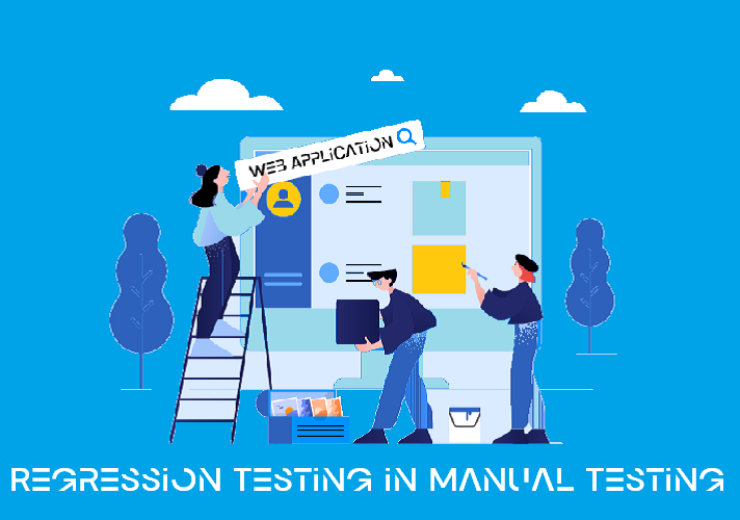Black Box Testing in Software Testing: A Complete Guide

Ensuring the quality and reliability of applications sits at the core of software development. Black box testing in software testing stands as a fundamental facet of software testing. It offers a unique perspective to check the quality of software. Imagine the software as an enigmatic black box where inputs are given and outputs are received. That, too, without going deep into its workings.
Isn’t it convenient? Of course, it is!
Hence, in this blog, we will navigate through the importance, types, processes, and more of black box testing in software testing. So, let’s get to the point without any further ado.
What is the importance of black box testing in software testing?
——————————————
Black box testing plays a pivotal role in software testing. This is due to its significance in ensuring software quality, reliability, and user satisfaction:
● User-centric evaluation
Black box testing evaluates software from the viewpoint of the user. It also emphasizes usability and utility. As a result, testing initiatives match user expectations. Additionally, it guarantees that the program serves its intended function.
● Functional validation
It confirms that the program performs as intended and in accordance with its requirements. Black box testing finds differences from the predicted course of action. This is done by looking at the inputs and outputs. As a result, it is beneficial to fix flaws early on in the development process.
● Independence from code knowledge
The internal code is not necessary for testers to understand. This opens up black box testing in software testing to a variety of team members. So, its independence guarantees fair assessment.
● Security assurance
Black box testing assists in locating software defects and security issues. It assists in identifying potential security concerns that users could exploit by simulating actual use scenarios.
● Compliance and standards
Black box testing in software testing guarantees that the software conforms with statutory and industry standards. This is essential, especially in fields like government, banking, and healthcare. So, it is a procedure where standards compliance is required.
● Regression testing
Regression testing benefits from black box testing. As a result, it makes sure that any upgrades or modifications do not unintentionally damage already-functioning functionality.
● Enhanced user experience
Black box testing in software testing contributes to the improvement of the user experience by concentrating on user interaction. It also points out usability problems. As a result, it enhances user interface design and raises satisfaction levels generally.
By now, we know that black box testing in software testing is extremely crucial. Now, let’s look at the types of black box testing.
What are the black box testing types?
——————————————
There are various black box testing types, each of which is designed to evaluate specific aspects of software functionality and behavior. Here below is a compiled list. Scrutinize!
● Functional testing
This category is focused on assessing whether the software’s functions align with the outcomes. It encompasses a range of testing approaches. For instance – unit testing involves scrutinizing individual software components or functions. Furthermore, integration testing ensures the smooth interaction of integrated components within the system.
● Non-functional testing
This category of testing focuses on non-functional aspects. This includes performance, security, usability, and compatibility. So, it ensures the software responds swiftly, remains secure, and offers a user-friendly experience. It also ensures the software functions seamlessly across various devices and platforms.
● Regression testing
This type verifies that new code changes do not introduce defects into previously tested functionality. As a result, it helps maintain software quality as the application evolves.
● Smoke testing
A preliminary test that checks whether the essential features work correctly after each build. Moreover, it determines if further testing is necessary.
● Exploratory testing
Testers, often without predefined test cases, explore the software. It is to identify defects and areas for improvement. So, this type relies on the tester’s intuition and creativity.
● Ad-Hoc testing
Similar to exploratory testing, ad-hoc testing is unstructured and unplanned. Moreover, testers identify issues by using the software in an ad-lib manner.
● Boundary value analysis
Focuses on testing input values at or near the boundaries of valid ranges. Additionally, it helps uncover potential issues related to data limits.
Now, to execute the black box testing in software testing, what is the procedure? Let us find out.
What is the process of black box testing in software testing?
——————————————
There are a number of black box testing techniques that emerge as the process progresses and can aid in the software’s effective implementation. It only requires careful consideration. So let’s look at this:
● Requirement analysis
Start with comprehending the user expectations and functional needs of the app. The goals and scope of the testing procedure are defined at this step.
● Test planning
Make a comprehensive test plan. The test cases, goals, and resources required should all be listed. Additionally, establish a testing schedule and offer the success criteria.
● Test data preparation
Collect the necessary test data, both correct and wrong inputs included. It is to ensure thorough testing coverage.
● Test execution
Utilize the provided test data to run the test cases. The program receives inputs, and the results are then compared to what was anticipated.
● Defect reporting
The report identified defects, providing detailed information about the issue. It should include steps to reproduce it, severity, and relevant documentation.
● Usability testing
Assess the software’s user-friendliness, including aspects such as navigation and overall user experience.
● Performance testing
Depending on project requirements, conduct performance testing. It is to evaluate the software’s response times, scalability, and resource utilization.
● Test closure
Conclude the testing phase by reviewing test results. Moreover, prepare test summary reports and obtain stakeholders’ approval for release.
● Final evaluation
Assess whether the software meets the defined criteria for success and is ready for deployment. Moreover, make informed decisions about its readiness.
While executing the process, you need the right tools, isn’t it? But amongst so many choices, which are the best tools for black box testing in software testing? Let’s find out.
What are the right tools for black box testing in software testing?
——————————————
Selecting the right tools for black box testing in software testing is crucial for efficient testing processes. These tools help testers design test cases, manage test data, and report defects. So here are some widely used tools:
● Selenium
A popular open-source tool primarily used for functional testing of web applications. Selenium supports multiple programming languages and also offers features for automated regression testing.
● Appium
An open-source tool for automating mobile application testing on Android and iOS platforms. Moreover, it’s widely used for mobile app black box testing.
● JUnit
A Java-based testing framework for unit and integration testing. Furthermore, it’s commonly used in combination with Selenium for web application testing.
● TestComplete
A commercial automation tool that supports both desktop and mobile applications. It offers a user-friendly interface for designing and executing tests. You can also partner with software testing services for the use of the best tools and the right procedure.
● Cypress
A free, open-source framework for end-to-end testing of web applications. It has a JavaScript-based scripting language and offers real-time reloading as well.
● Postman
Web application GUI testing is supported by Postman. Additionally, it is helpful for API functional testing.
● SoapUI
A well-liked instrument for testing APIs and web services. Functional testing, security testing, and load testing are among the functions available for black box testing.
Conclusion
Black box testing in software testing is effective in preserving the software’s quality. Additionally, it doesn’t necessitate extensive coding expertise, making it available to more members. To do it correctly, you must know the proper techniques and equipment, though. So don’t put it off any longer, and hire software testing professionals to make your software more dependable right away!




